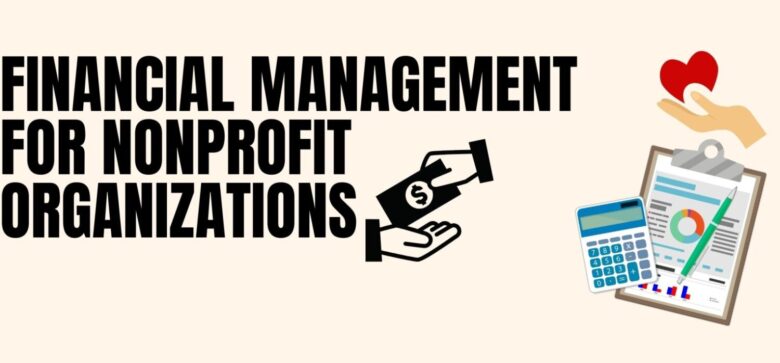The non-profit sector has entered a new era where digital transformation is no longer optional but essential for survival and growth. Organizations that embrace technology find themselves better equipped to manage operations, engage donors, and amplify their impact. However, the transition from traditional methods to digital solutions can seem overwhelming for resource-constrained non-profits.
Digital transformation represents more than simply adopting new software. It encompasses a fundamental shift in how organizations operate, communicate, and deliver value to their communities. Non-profits that successfully navigate this transition discover improved efficiency, enhanced transparency, and stronger connections with stakeholders.
Understanding the Digital Landscape for Non-Profits

Source: aztechtraining.com
Non-profit organizations face unique challenges that differ significantly from their for-profit counterparts. Limited budgets, volunteer-dependent operations, and diverse stakeholder groups require specialized approaches to technology adoption. The digital tools that work for commercial enterprises often fail to address the specific needs of charitable organizations.
Modern non-profits must balance multiple priorities simultaneously. They need to maintain donor relationships, coordinate volunteer activities, track program outcomes, ensure regulatory compliance, and communicate their mission effectively. Each of these areas benefits from dedicated digital solutions that streamline processes and reduce administrative burden.
The pandemic accelerated digital adoption across all sectors, and non-profits were no exception. Organizations that previously relied on in-person events and face-to-face fundraising suddenly needed virtual alternatives. This forced evolution revealed both the potential and the challenges of digital transformation in the charitable sector.
Essential Categories of Digital Tools
Financial Management and Accounting

Source: blog.eventsmart.com
Financial transparency remains paramount for non-profit organizations. Donors and grant-making bodies demand clear accounting and proof that funds are used effectively. Cloud-based accounting platforms designed for non-profits offer features like fund accounting, grant tracking, and automated financial reporting that simplify compliance requirements.
These systems integrate with banking services and payment processors, reducing manual data entry and minimizing errors. Real-time financial dashboards provide board members and executives with instant visibility into organizational health, enabling data-driven decision-making.
Donor Management and Fundraising
Cultivating donor relationships requires consistent communication and personalized engagement. Customer relationship management systems adapted for non-profits help organizations track donor history, preferences, and communication patterns. These platforms enable segmented messaging, automated thank-you communications, and targeted fundraising campaigns.
Online fundraising tools have expanded dramatically in recent years. Peer-to-peer fundraising platforms, recurring donation systems, and integrated payment processing make it easier for supporters to contribute. Mobile-first donation experiences capture spontaneous giving opportunities that traditional methods miss entirely.
Membership and Community Management
For membership-based non-profits, managing member data, renewals, and engagement presents ongoing challenges. Comprehensive membership management platforms centralize these functions, automating renewal reminders, processing payments, and tracking member benefits. Tools like Springly provide non-profits with integrated solutions that handle membership administration, event registration, and communication in one platform, significantly reducing the administrative workload for small teams.
These systems also facilitate community building by creating member directories, discussion forums, and event calendars that strengthen connections among constituents. The data collected through these platforms offers valuable insights into member engagement patterns and preferences.
Communication and Marketing Tools

Source: hitechnectar.com
Non-profits must tell compelling stories to inspire action and support. Email marketing platforms designed for charitable organizations offer templates, automation, and analytics that help craft effective campaigns. Social media management tools allow teams to maintain a consistent presence across multiple platforms without overwhelming limited staff.
Content management systems enable non-profits to maintain professional websites that serve as central hubs for information, donation processing, and volunteer recruitment. Integration between these various communication channels ensures consistent messaging and branding across all touchpoints.
Implementation Strategies for Successful Digital Transformation
Starting with Assessment and Planning
Before investing in new technology, non-profits should conduct thorough assessments of current processes and pain points. Which manual tasks consume the most staff time? Where do errors occur most frequently? What information is difficult to access when needed? The answers to these questions guide technology selection and implementation priorities.
Involving staff members at all levels in this assessment ensures that solutions address real needs rather than theoretical problems. Front-line workers often possess valuable insights into operational inefficiencies that leadership may overlook.
Choosing the Right Tools
The marketplace offers countless options for every non-profit function. Evaluation criteria should include ease of use, integration capabilities, scalability, vendor support, and total cost of ownership. Many technology providers offer special pricing or donated licenses for registered non-profits, making enterprise-grade solutions accessible to smaller organizations.
Prioritizing tools that integrate well with each other prevents data silos and reduces duplicate data entry. An integrated technology ecosystem delivers far greater value than disconnected point solutions, even if individual components seem less feature-rich.
Training and Change Management
Technology adoption fails when users lack proper training or resist change. Successful digital transformation includes comprehensive training programs, ongoing support resources, and change management strategies that address concerns and build enthusiasm. Champions within the organization who embrace new tools can influence broader adoption through peer support and advocacy.
Patience during the transition period is essential. Staff members need time to develop proficiency with new systems, and initial productivity may temporarily decline. Organizations that rush implementation without adequate support often face resistance and poor adoption rates.
Measuring Impact and Return on Investment
Non-profits must justify technology investments to boards and donors by demonstrating tangible returns. Metrics might include time saved on administrative tasks, increased donor retention rates, improved volunteer engagement, or expanded program reach. Establishing baseline measurements before implementation enables accurate assessment of impact.
Beyond quantitative metrics, qualitative improvements matter significantly. Reduced staff stress, improved morale, and greater organizational agility represent valuable outcomes that may not appear in spreadsheets but contribute substantially to mission achievement.
Overcoming Common Obstacles
Budget constraints represent the most frequently cited barrier to digital transformation. However, many non-profits discover that technology investments generate savings through efficiency gains and increased fundraising capacity. Grant funding specifically for technology upgrades is often available from foundations focused on organizational capacity building.
Technical expertise limitations can be addressed through partnerships with technology consultants who specialize in non-profit implementations, pro bono support from corporate volunteer programs, or board members with relevant professional backgrounds. Building internal technology capacity takes time but pays dividends across all organizational functions.
Moving Forward with Confidence

Source: smartosc.com
Digital transformation represents a journey rather than a destination. Technology evolves continuously, and non-profits must remain adaptable to leverage emerging opportunities. Starting with carefully selected tools that address critical needs builds momentum and demonstrates value, paving the way for additional investments as resources allow.
The organizations that thrive in the coming years will be those that view technology as an enabler of mission rather than a distraction from it. Digital tools amplify human effort, extend organizational reach, and deepen impact in ways that manual processes simply cannot match. Non-profits that embrace this reality position themselves for sustainable growth and expanded service to their communities.
Success in digital transformation comes not from adopting every available tool, but from thoughtfully selecting and implementing solutions that align with organizational goals and capacity. By focusing on genuine needs, involving stakeholders throughout the process, and maintaining commitment through implementation challenges, non-profits can harness technology to advance their missions more effectively than ever before.




